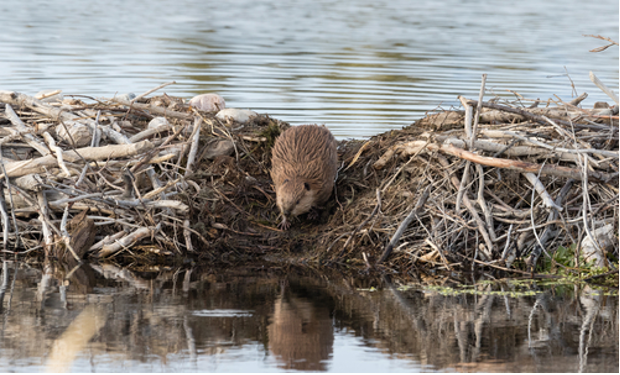Known as hardworking animals, beavers uphold their reputation with their capability to build dams and lodges. To maintain the quality of their dams, beavers dedicate their hours daily to replace poles & sticks and plastering more mud. With the significant time beavers spend building and maintaining dams, why do they even build them in the first place?
Beavers build dams primarily to protect themselves and to ensure a dry and safe space for their food. Beavers also construct dams as they hate the sound of running water. The sound of running water indicates the appearance of a leak in a dam, making them work many hours to find the leak and repair it.
An Introduction to Beavers
Known as one of the largest-sized rodents in the world, beavers have a scale-covered tail, webbed feet, and a thick coat of fur. They’re known as diligent animals that can change their environments, with idioms such as eager beaver and busy as a beaver attributed to their hardworking behavior.
Dams must be continuously maintained, and beavers do so every night, replacing shifted sticks and poles and patting on more mud. They build dams throughout their territory; some for water control; some, it seems, just for fun. A family of beavers can build a 35-foot long dam in a week.
Yellowstone Wildlife
With a powerful jaw and durable teeth combination, beavers build their dams from the branches and trees they cut using their incisors. The upper incisors of beavers have a length of 20 to 25 mm. As they grow older, their incisors continue to grow.
The American beaver and the Eurasian beaver comprise the beaver species. The American beaver or the Castor canadensis has an average weight of 27 kilograms, and they’re 23 to 29 inches long. Their tails add 7.75 to 12 inches to their length. Meanwhile, the Eurasian beaver or the Castor fiber has a similar weight, with a longer length of 29 to 53 inches. The Eurasian beavers generally have smaller skulls and narrower tails than American beavers.
Beavers are semiaquatic animals, developing closable ears & nostrils and transparent eye membranes to adapt to their lifestyle. Water is essential for beavers, and they dwell in freshwater lakes, ponds, swamps, marshes, and rivers.
The beavers’ house is called a lodge, which are small dome-shaped homes made from grasses & moss smothered with mud and woven sticks. Lodges have a typical width of 8 feet, and they reach up to 3 feet in length inside. (Source: Live Science)
Beavers and Their Dams
The main reason beavers build dams is to protect themselves from predators like wolves and bears. Instead of living in the dam, beavers use them to create a deep water pond. Within this deep body of water, they produce their lodges as a safe and dry space for their food, especially in the winter, and themselves.
The dams produce deep enough water to deter predatory animals while allowing beavers to create underwater entrances into their lodge. The underwater portal the beavers make can serve as a means of escape when they face danger. (Source: Science Focus)
When beavers hear the sound of running water, they think that their dam leaks. Beavers would dedicate many hours to finding the leak and repairing it, including the leaks of human-made dams.
A Jackson Hole rancher, Chancy Wheeldon, one day built a pond all, but the spillway, which he would complete the following day. The following day he awoke to find beavers had finished his dam that leaked the perfect amount to regulate stream flow.
Yellowstone Wildlife
(Source: Yellowstone Wildlife)
